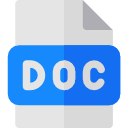Producing News Stories on the YouTube Platform by Mobile Journalists in Indonesia
Abstract
Mobile journalism has been a mainstay in some news media outlets as audiences migrate to smaller screens for news. In response to the competitive media environment, organizations embrace mobile technology to expand the scope of their content. This article employs emerging perspectives as one of the organizational theory approaches. This study aims to determine the process behind news stories created by mobile journalists depending on their institution, the current circumstances, and technological advances. This study compares mobile journalists from two different news YouTube channels in Indonesia. Researchers collected data by observing news videos and interviewing news editors. The result showed that rules upheld by the media organizations would determine their productivity, the topic of news stories, and the quality of news sources. The COVID-19 pandemic has changed the news creation process as they had to work remotely. In addition, it is worth noting that mobile journalists must shoot and edit videos and have a multimedia mindset. This study suggests that a newsroom must have stricter rules and guidelines as it will be the main factor in producing news videos on YouTube channels. Journalists should also be prepared to adopt digital technology to cope with unprecedented situations.
Keywords
Full Text:
PDFReferences
Blankenship, J. C. (2016). Losing Their “MoJo”?: Mobile journalism and the deprofessionalization of television news work. Journalism Practice, 10(8), 1055–1071. https://doi.org/10.1080/17512786.2015.1063080
Bui, M. N., & Moran, R. E. (2020). Making the 21st Century Mobile Journalist: Examining Definitions and Conceptualizations of Mobility and Mobile Journalism within Journalism Education. Digital Journalism, 8(1), 145–163. https://doi.org/10.1080/21670811.2019.1664926
Cervi, L., Tornero, J. M. P., & Tejedor, S. (2020). The challenge of teaching mobile journalism through MOOCs: A case study. Sustainability (Switzerland), 12(13). https://doi.org/10.3390/su12135307
Imogen. (2020). The 4th Communications Insight Report, Jurnalisme & normal baru.
Martyn, P. H. (2009). The mojo in the third millennium. Journalism Practice, 3(2), 196–215. https://doi.org/10.1080/17512780802681264
Masduki, M., & Prastya, N. M. (2022). Perubahan Pola Kerja Jurnalistik Pasca COVID-19 dan Penurunan Kualitas Berita di Indonesia. Jurnal Ilmu Komunikasi, 19(3), 266–280. https://doi.org/10.31315/jik.v19i3.5058
Nelson, J. L. (2019). The Persistence of the Popular in Mobile News Consumption. Digital Journalism, 6(7), 87–102. https://doi.org/10.1080/21670811.2019.1612766
Nugroho, Y., Putri, D. A., & Laksmi, S. (2012). Mapping the Landscape of the Media Industry in Contemporary Indonesia. Report Series: Engaging Media, Empowering Society: Assessing Media Policy and Governance in Indonesia through the Lens of Citizens’ Rights, March 45. https://cipg.or.id/wp-content/uploads/2015/06/MEDIA-2-Media-Industry-2012.pdf
Oktavianti, R., & Loisa, R. (2021). Ekologi Media Dalam Peliputan Keberagaman Jurnalis Televisi Kontributor Ambon. Jurnal Muara Ilmu Sosial, Humaniora, Dan Seni, 5(1), 277. https://doi.org/10.24912/jmishumsen.v5i1.10179.2021
Oktavianti, R., Paramita, S., & Sukendro, G. G. (2022). News Sources and Consideration in Making Editorial and Commercial Content in the YouTube News Channels Sumber Berita dan Pertimbangan dalam Pembuatan Konten Editorial dan Komersial pada Saluran YouTube Media Berita. Pekommas, 7(1), 63–76. https://doi.org/10.30818/jpkm.2022.2070107
Olsen, R. K., Pickard, V., & Westlund, O. (2020). Communal News Work: COVID-19 Calls for Collective Funding of Journalism. Digital Journalism, 8(5), 673–680. https://doi.org/10.1080/21670811.2020.1763186
Perreault, G., & Stanfield, K. (2019). Mobile Journalism as Lifestyle Journalism?: Field Theory in integrating mobile in the newsroom and mobile journalist role conception. Journalism Practice, 13(3), 331–348. https://doi.org/10.1080/17512786.2018.1424021
Picone, I., De Wolf, R., & Robijt, S. (2016). Who Shares What with Whom and Why?: News sharing profiles amongst Flemish news users. Digital Journalism, 4(7), 921–932. https://doi.org/10.1080/21670811.2016.1168708
Salzmann, A., Guribye, F., & Gynnild, A. (2021). “We in the Mojo Community”–Exploring a Global Network of Mobile Journalists. Journalism Practice, 15(5), 620–637. https://doi.org/10.1080/17512786.2020.1742772
Shockley-Zalabak, P. S. (2014). Fundamentals of Organizational Communication (Eighth). Pearson.
Steele, J. (2021). Reuters Institute Digital News Report 2021. In Reuters Institute Digital News Report 2021, 10th Edition. https://reutersinstitute.politics.ox.ac.uk/digital-news-report/2021
Yin, R. K. (2003). Case Study Research Design and Methods Third Edition. In Applied Social Research Methods Series (Vol. 5). Sage Publications.
DOI: https://doi.org/10.31315/jik.v22i1.6907
Refbacks
- There are currently no refbacks.
Copyright (c) 2024 Jurnal Ilmu Komunikasi
Jurnal Ilmu Komunikasi indexed by:
Copyright of Jurnal Ilmu Komunikasi ISSN 1693-3028 (print), ISSN 2407-8220 (online)
Alamat:
Kampus II UPN "Veteran" Yogyakarta, Jl. Babarsari 2, Tambakbayan, Yogyakarta 55281
Phone: (0274)485268
Fax: (0274)487147
Email: [email protected]










